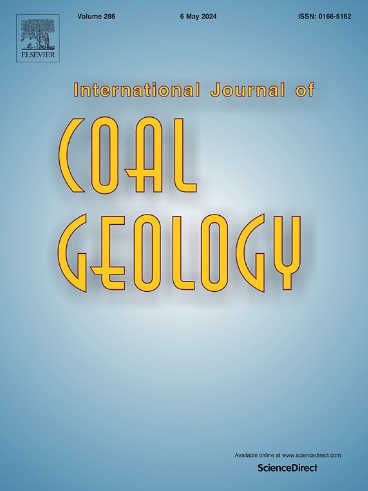Horgen-Käpfnach, the largest Swiss coal deposit: Geology, petrology and geochemistry
IF 5.6
2区 工程技术
Q2 ENERGY & FUELS
引用次数: 0
Abstract
The Miocene Käpfnach seam is only about 0.5 m thick but offers interesting insights into the depositional environments during the early stages (∼16 Ma) of the deposition of the Upper Freshwater Molasse in the Swiss part of the North Alpine Foreland Basin. It is also the most important coal deposit in Switzerland. The study focused on the coal seam, which includes a marly parting (“Stinkstein”), but the underlying and overlying sediments were also investigated.
The coal seam, which is separated by the “Stinkstein” parting into a lower and an upper part, was investigated using bulk geochemical data, biomarker composition, isotope data and organic petrography. The coal accumulated in a freshwater environment. High sulphur contents and the presence of carbonate shells in the upper part of the seam reflect a high pH value related to a carbonate-rich environment. A significant part of sulphur in the upper part of the seam is organically bound. Petrographical investigations show that herbaceous plants rather than big trees contributed to the organic matter. Biomarker data show the presence of ferns, angiosperms and gymnosperms, albeit in highly variable proportions across the seam. Representatives of the Cupressaceae, Taxaceae and Sciadopityaceae families contributed to the peat-forming vegetation during the early stages of peat accumulation. Open water areas, colonized by freshwater gastropods, existed during deposition of the upper part of the seam. High contents of inertinite macerals in this part of the seam reflect frequent wildfires in the paleomire surroundings.
Horgen-Käpfnach,瑞士最大的煤矿:地质、岩石学和地球化学
中新世Käpfnach煤层厚度仅约0.5 m,但为北阿尔卑斯前陆盆地瑞士部分上淡水Molasse沉积早期(~ 16 Ma)的沉积环境提供了有趣的见解。它也是瑞士最重要的煤矿。研究的重点是煤层,其中包括一个灰岩分型(“Stinkstein”),但下面和上覆的沉积物也进行了调查。
本文章由计算机程序翻译,如有差异,请以英文原文为准。
求助全文
约1分钟内获得全文
求助全文
来源期刊

International Journal of Coal Geology
工程技术-地球科学综合
CiteScore
11.00
自引率
14.30%
发文量
145
审稿时长
38 days
期刊介绍:
The International Journal of Coal Geology deals with fundamental and applied aspects of the geology and petrology of coal, oil/gas source rocks and shale gas resources. The journal aims to advance the exploration, exploitation and utilization of these resources, and to stimulate environmental awareness as well as advancement of engineering for effective resource management.
 求助内容:
求助内容: 应助结果提醒方式:
应助结果提醒方式:


